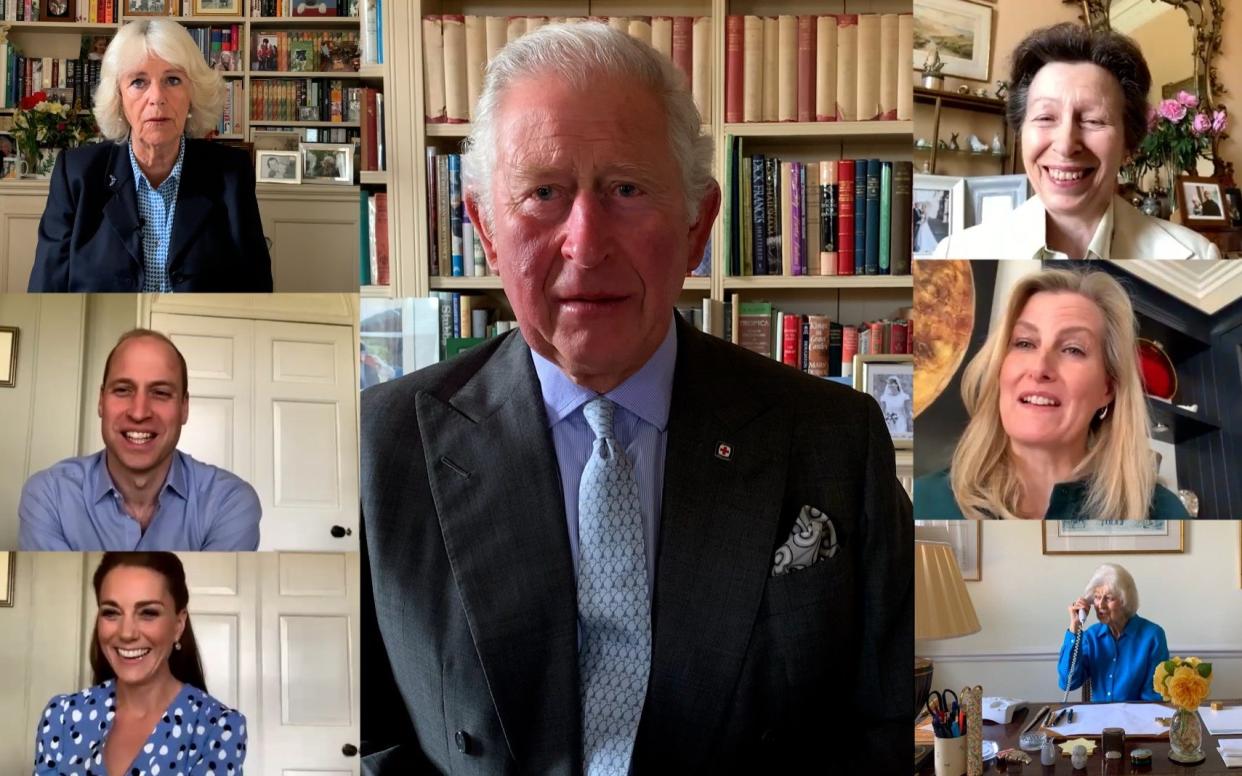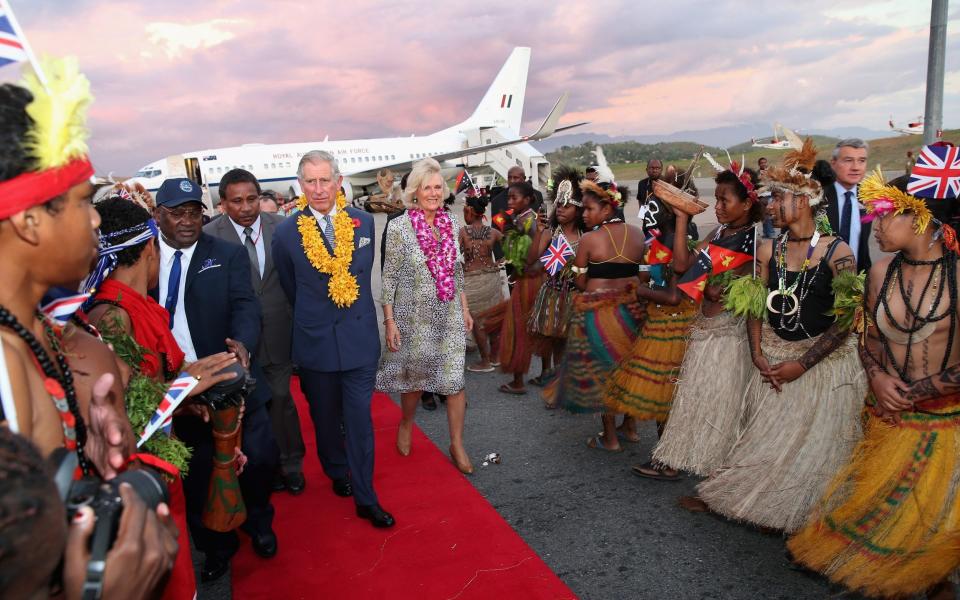Prince Charles enjoys Zoom so much he will use it post-pandemic, says aide

- Oops!Something went wrong.Please try again later.
Most people in their seventies would be glad to see the back of conversations over Zoom, with its many associated pitfalls such as the dreaded mute button and awkward camera angles.
Not so the Prince of Wales, who is keen to further embrace video conferencing and incorporate it into his long-term working pattern.
Prince Charles, 72, has so enjoyed the dual advantages of being able to convene heads of state from across the globe while at the same time reducing carbon emissions that he intends to make such practices permanent.
Clive Alderton, his private secretary, said the Prince had “really enjoyed” being able to conduct video meetings with “numerous” heads of state and government during the pandemic, from the chancellor of Germany to the King of Jordan.
“When Covid restrictions finally disappear, I think we might just retain some of these methods of working,” he disclosed.
Describing them as “real positives,” he added: “We became very used to and increasingly comfortable with mobile devices propped up on piles of books as messages are recorded or Zoom calls were joined.”
A source close to the Prince said he had been “really struck” by the “sort of diplomacy” that could be conducted remotely
“The Prince has always done quite a lot of this sort of thing on the telephone,” they said.
“But to be honest, what we had never done before, was video conferencing with heads of state and government.”
A round table the Prince convened with the African heads of state and government was described as “absolutely brilliant”, while a similar event hosted for Asian leaders was also considered a hit.
“We’ve never done that before but I think it’s been a huge success,” the source said.
“The Prince has really enjoyed doing it. It's been really striking that they all turn up, which is fantastic.
“The technology works. There was a real concern the first time we did this that the IT would glitch in the middle - half of the presidents and prime ministers would be frozen on the screen.
“Not a bit of it, it was absolutely brilliant. So I think we're going to do more of that.
“What it's made us realise is that a blend of these things is going to be the right answer going forward.”
Despite the many positives, the Prince’s staff at Clarence House insisted that nothing could exceed the benefits of face-to-face diplomacy.

“You only really build these relationships when you go and see people, stay with them, spend time off duty with them,” one said.
“You can't walk around the park with them on Zoom. But I think what we will see in the future is a blend of these things, partly because the environmental impact of not travelling is huge.”
Alongside its annual financial review, published last week, Clarence House released its own carbon statement, detailing the Prince and the Duchess of Cornwall’s carbon footprint.
Mr Alderton said the couple had “taken a personal lead” in becoming energy efficient, saving nearly 3,500 tonnes of carbon dioxide emissions over the last 10 years - equivalent to driving a petrol car around the planet 465 times.
He said that 100 per cent of the electricity used across all their homes and offices now came from renewable sources.
The reduction in official travel due to the pandemic meant their carbon footprint was significantly down on the previous year.
The overall cost for royal travel fell by nearly 40 per cent, from £3.2 million to £2.1 million.
The most expensive trip was Prince Charles’s charter flight to Kuwait in October to pay his condolences following the death of the country's Emir, Sheikh Sabah al-Ahmad al-Sabah, at a cost of £58,993.

